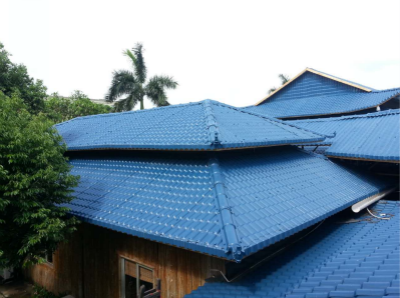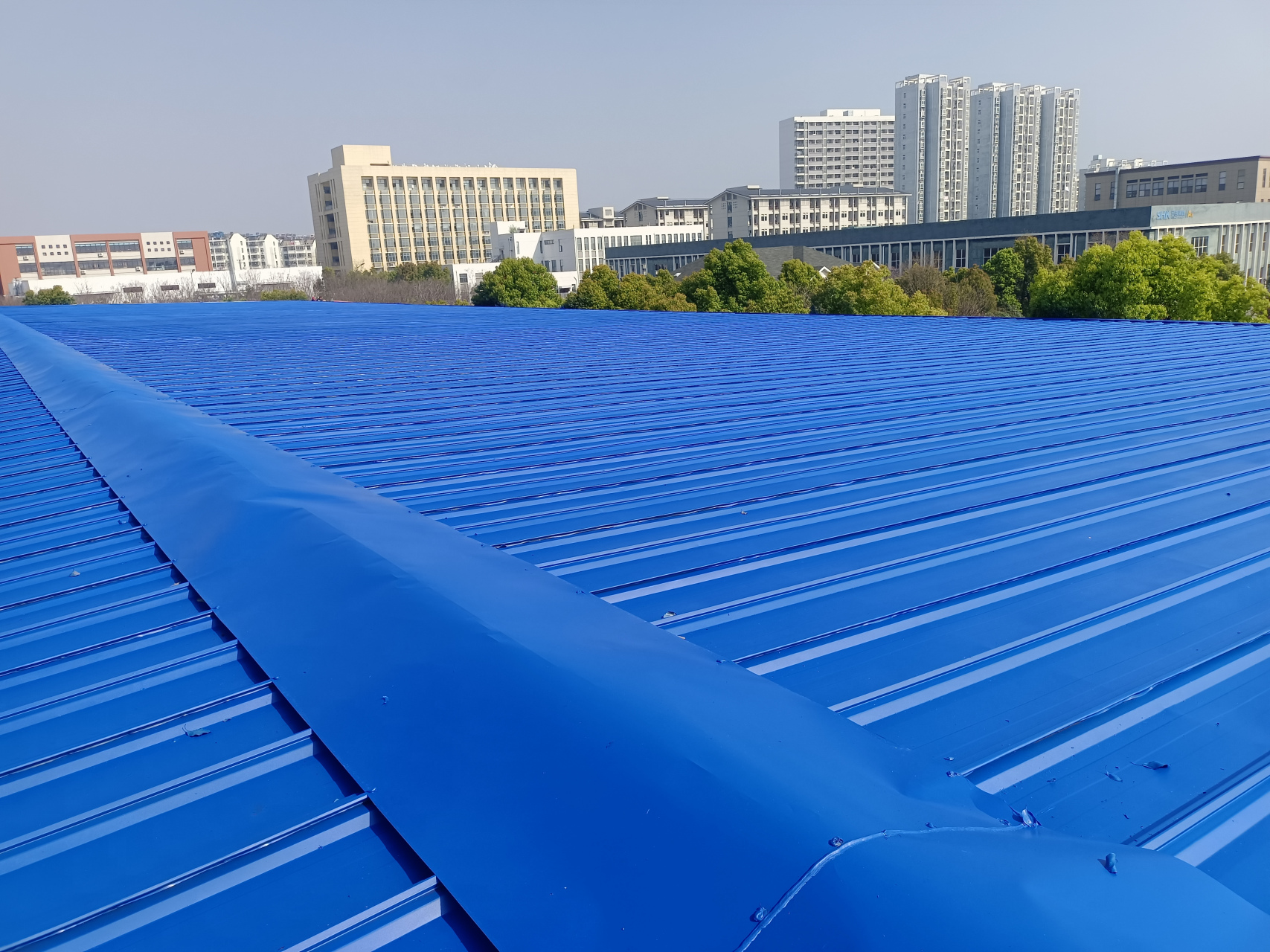When it comes to roof decoration and material selection, ASA synthetic resin tiles and color steel tiles are among the most debated choices. Each of these roofing options has unique characteristics, benefits, and drawbacks. For homeowners, builders, and architects, making the right decision depends on multiple factors, including budget, durability, weather resistance, aesthetics, and long-term performance. Below, we offer a comprehensive analysis to help you make the most informed decision.
What Are ASA Synthetic Resin Tiles?
ASA synthetic resin tiles are made from acrylonitrile-styrene-acrylate, a durable and lightweight plastic material known for its weather resistance, UV protection, and longevity. This modern roofing material has grown in popularity due to its eco-friendly attributes and strong performance across various climate conditions.

Advantages of ASA Synthetic Resin Tiles1. Lightweight Yet Extremely Durable
One of the standout features of synthetic resin tiles is their lightweight structure, which significantly reduces the burden on the building's framework. Despite their low weight, these tiles offer impressive load-bearing strength, making them ideal for regions prone to storms and hail.
Weight per square meter: Approximately 6–10 kg
Resistant to deformation under normal weight conditions
Suitable for both residential and commercial buildings
2. Exceptional Fire Resistance and Corrosion Resistance
ASA synthetic resin tiles are rated B1 in fire resistance, indicating strong performance in flame retardancy. In addition, the material is chemically inert, meaning it will not corrode even under extreme environmental exposure.
Withstands acid rain, salt spray, and alkali exposure
Ideal for coastal and industrial environments
Long-lasting surface without flaking or peeling
3. Heat Insulation and Sound Absorption
The multi-layered construction of resin tiles allows for excellent thermal insulation. This helps regulate indoor temperature, reducing the need for excessive air conditioning. Moreover, it offers significant noise reduction, shielding occupants from rain or exterior urban noise.
4. Long Lifespan and Color Retention
Thanks to the UV-resistant ASA layer, these tiles maintain their color and form for years.
Disadvantages of ASA Synthetic Resin Tiles
1. Heat Deformation Risk
While these tiles can handle temperatures up to 70°C, prolonged exposure beyond this limit may cause deformation, especially in equatorial or desert climates. Roofing insulation and ventilation must be optimized for hot environments.
2. Drainage and Waterproofing Concerns
If improperly installed, water pooling can occur due to the tile’s curvature design, affecting both the tile and the underlying structure.
What Are Color Steel Tiles?
Color steel tiles, also known as pre-painted galvanized steel sheets, are made of cold-rolled steel plates coated with zinc and a colorful polymer paint. These tiles are widely used in industrial, agricultural, and temporary housing structures due to their cost-effectiveness and quick installation.

Advantages of Color Steel Tiles
1. High Strength and Load-Bearing Capacity
Color steel tiles can serve as both roofing and structural components, eliminating the need for additional reinforcement.
2. Lightweight and Easy to Install
Despite their strength, these tiles are light and easy to cut, bend, and install.
3. Aesthetic Variety and Glossy Finish
These tiles are available in a range of bright, decorative colors that enhance architectural appeal.
Available in various profiles and finishes
Can complement modern, industrial, or rural designs
4. Fire-Resistant Surface
Color steel is non-combustible, providing a layer of fire safety to the building envelope.
Disadvantages of Color Steel Tiles
1. Prone to Corrosion and Rusting
Despite protective coatings, exposure to high humidity, saltwater, or acidic rain can cause the tiles to rust over time, especially in the shaded or hidden roof sections.
2. Lower Thermal and Sound Insulation
Color steel tiles offer poor insulation against heat and noise, leading to uncomfortable indoor temperatures and loud ambient noise during rainfall.
Resin Tiles vs. Color Steel Tiles: A Head-to-Head Comparison
| Feature | ASA Synthetic Resin Tiles | Color Steel Tiles |
| Weight | Light (6–10 kg/m²) | Moderate (15–20 kg/m²) |
| Durability | 25–30 years | 10–15 years |
| Heat Insulation | Excellent | Poor |
| Sound Insulation | Excellent | Poor |
| Fire Resistance | B1 grade | High |
| Corrosion Resistance | Excellent | Moderate |
| Cost | Higher upfront | Lower upfront |
| Maintenance | Minimal | Requires painting and anti-rust treatments |
| Installation | Simple | Requires tools and skilled labor |
| Aesthetic Longevity | Color retention | Prone to fading |
Which Tile Is Better for Roof Decoration?
ASA synthetic resin tiles are a better choice for long-term performance, energy efficiency, and comfort. While the initial cost may be slightly higher than that of color steel tiles, the low maintenance, longer lifespan, and superior insulation properties make resin tiles more cost-effective over time.
Color steel tiles may be suitable for budget-sensitive or industrial projects that do not require high insulation or long-term durability. However, they fall short when it comes to aesthetic longevity, climate resistance, and interior comfort.
Final Verdict: Choose the Tile That Suits Your Needs
If you're looking for a modern roofing solution that offers eco-friendly construction, durability, and aesthetic performance, ASA synthetic resin tiles are the superior choice. They provide enhanced comfort, weather resistance, and long-term cost savings that color steel simply cannot match.
For those with tight budgets or in need of a quick industrial roofing solution, color steel tiles may still offer a viable temporary solution. Ultimately, the best roofing material depends on your specific requirements, climate, and investment vision.
English
العربية
Français
Русский
Español
Português
Deutsch
italiano
日本語
한국어
Nederlands
Tiếng Việt
ไทย
Polski
Türkçe
አማርኛ
Bahasa Melayu
தமிழ்
Filipino
Bahasa Indonesia
magyar
Română
Монгол
қазақ
Српски
हिन्दी
فارسی
Kiswahili
Slovenčina
Slovenščina
Svenska
українська
Ελληνικά
Suomi
Հայերեն
עברית
اردو
Shqip
বাংলা
Hrvatski
Afrikaans
Māori
සිංහල
Oʻzbekcha
latviešu
Беларуская мова
Bosanski
Български
ქართული
Lietuvių
Malti











